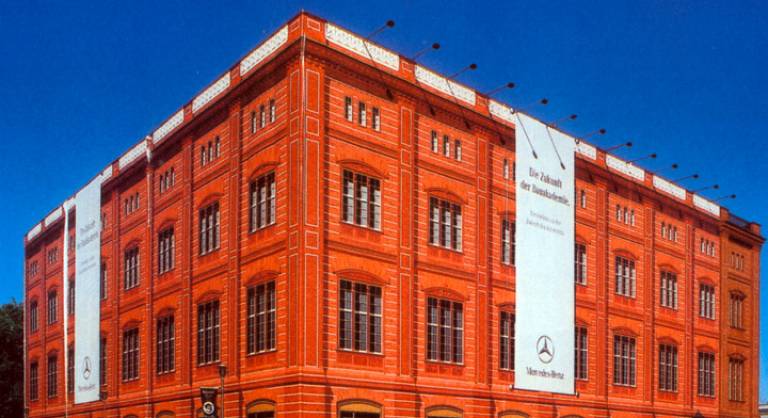Branding Berlin in the new century: the politics of urban imaging was funded by a six-month 'experienced researcher grant' from the Alexander von Humboldt Foundation.

Overview
The project had two main objectives:
i) to critically investigate the practices of city marketing and place branding developed in Berlin since 2001, to expand a previous research project (which covered the period 1989-2000) and produce a single-authored book on the subject;
ii) to investigate the complex trajectory and politics of the 'temporary uses' of urban space (Zwischennutzung) in Berlin - in particular how city marketers and local policy makers have integrated new types of sites, urban uses and users in the politics of 'place branding' and local economic development in Berlin since 2000, and the conflicts this gives rise to.
Since the Fall of the Berlin Wall, the emerging urban landscape of the 'new' Berlin post-1989 has not only been physically built, it has also been presented to the public eye, imaged, marketed, staged and branded, discursively and visually, through billboards presenting the projects under construction, a red INFOBOX on the Potsdamer Platz displaying three-dimensional visualisations of the future Berlin, models of the city displayed in public buildings, programmes of guided tours of the construction sites, observation platforms inviting the passer-by to peer into the construction process, advertising campaigns for 'The New Berlin' posted on the city's facades.
The project investigated the meaning of such practices within the wider politics of urban development and of collective identity and memory construction in reunified Berlin by addressing the following questions: what are the actors and institutions involved in the production of urban images, place marketing policies, strategies and discourses? Why is there still so much effort put into the representation, communication and staging of urban change? How are place marketing activities implemented, through what media? How have place marketing strategies evolved over time between the end of the 1990s and 2009 in line with the changing political, economic and social situation in the city? What images, what discourse on the city and what narrative of urban change have been produced (recurring themes, key sites)?
- People
Dr Claire Colomb
View Claire's profile
Send Claire an email- Outputs
The following publications are the main outcomes of the project:
Colomb, C. (2011) Staging the New Berlin. Place Marketing and the Politics of Urban Reinvention post-1989. London, New York: Routledge.
The book explores the politics of place marketing and the process of 'urban reinvention' in Berlin between 1989 and 2011.
In the context of the dramatic socio-economic restructuring processes, changes in urban governance and physical transformation of the city following the Fall of the Wall, the 'new' Berlin was not only being built physically, but staged for visitors and Berliners and marketed to the world through events and image campaigns which featured the iconic architecture of large-scale urban redevelopment sites. Public-private partnerships were set up specifically to market the 'new Berlin' to potential investors, tourists, Germans and the Berliners themselves.
The book analyzes the images of the city and the narrative of urban change, which were produced over two decades. In the 1990s three key sites were turned into icons of the 'new Berlin': the new Postdamer Platz, the new government quarter, and the redeveloped historical core of the Friedrichstadt. Eventually, the entire inner city was 'staged' through a series of events which turned construction sites into tourist attractions.
New sites and spaces gradually became part of the 2000s place marketing imagery and narrative, as urban leaders sought to promote the 'creative city'. By combining urban political economy and cultural approaches from the disciplines of urban politics, geography, sociology and planning, the book contributes to a better understanding of the interplay between the symbolic 'politics of representation' through place marketing and the politics of urban development and place making in contemporary urban governance.
Colomb, C. (forthcoming) 'Pushing the urban frontier: temporary uses of space, city marketing and the creative city discourse in 2000s Berlin', Journal of Urban Affairs .
Novy, J. and Colomb, C. (forthcoming) 'Struggling for the right to the (creative) city in Berlin and Hamburg. New urban social movements, new spaces of hope?', International Journal of Urban and Regional Research.
Colomb, Claire and Kalandides, Ares (2010) 'The new ‘be Berlin' campaign: old wine in new bottles or innovative form of participatory place branding?', in Ashworth, G.J. and M. Kavaratzis (eds), Towards effective place brand management: branding European cities and regions, Cheltenham, UK and Northampton, MA, US: Edward Elgar, pp. 173-190.
 Close
Close

